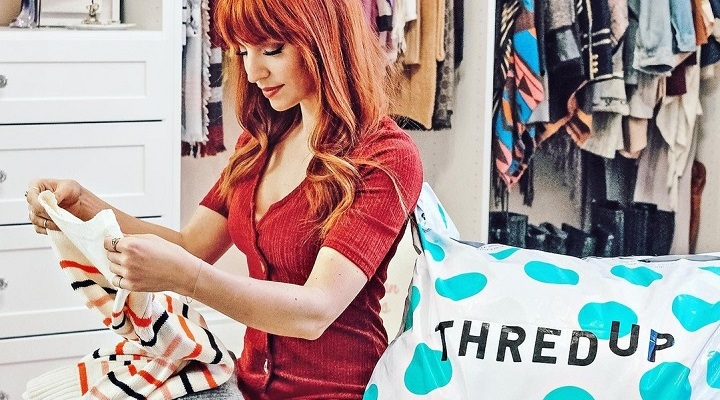Achieving circularity in fashion is similar to the 10-year overnight success story. It is a long and arduous transformation many organisations won’t see tangible results from for years to come. Yet, the need for a sustainable and ethical future in fashion is necessary, due to the industry’s social and environmental impact, which has already caused substantial damage. We’ve heard and said this before in some form or another. Thousands of fashion businesses have begun their circular jo
journey, implementing various strategies to lower carbon emissions, reduce textile waste during the design process and incorporate alternative materials and fibres. And while change is occurring, it is slower than many had hoped.
However, when considering this, it’s worth bringing into perspective the entire fashion landscape, which is recalibrating to a new post-pandemic normal within a tough financial environment.
In a recent report published by The Business of Fashion and McKinsey & Co, experts anticipate that in 2023, the fashion market will struggle to deliver significant growth, largely due to inflation, political uncertainties and ongoing disruption to supply chains. This compounds the challenges fashion businesses are up against when adopting circular practices.
As new circular business models emerge, steadfast executives are laser focused on profitability and growth. This results in many fashion companies downsizing, mass layoffs and businesses clothing altogether.
Exploring the commercial viability of circular fashion further, here are three areas where retailers are experiencing challenges and their outlook.
Impending regulations
In March 2022, the European Union submitted a strategy for sustainable and circular textiles calling for Digital Product Passports (Digital IDs) to be mandatory on textiles sold in Europe by 2030. This plan aims to deliver on the commitments of the European Green Deal, the new circular economy action plan and the industrial strategy.
At the start of 2023, France started targeting the country’s biggest fashion companies, which are required to give customers in depth details relating to a product’s environmental characteristics under the Environmental Code, Section 9: pPublic information on waste-generating products legislation. This includes information such as the proportion of recycled material used, where garments are made and a warning on items made with more than 50 per cent synthetic fibres stating that they will shed microfibres in the wash.
The fashion industry is on the cusp of global intervention enforced by regulations and standards to ensure transparency and traceability are accessible to all consumers. To comply with current and upcoming laws, operational changes will need to happen now.
Resale and rental
Business models such as resale and rental entered the circular arena several years ago, providing a useful channel where consumers can keep clothes and accessories in use for longer, delaying the inevitability of items ending up in landfills and incinerators.
Some of the early players to gain traction include Vestiaire Collective, The RealReal, ThredUp, Rent the Runway, Rntr, Designerex and GlamCorner. As these marketplaces and platforms grew quickly, so did interest from brands that were keen to maintain control of the brand experience. This spurred the rise of resale-as-a-service, a cloud solution allowing customers to list their pre-loved items on partner marketplaces easily.
The accelerated growth in resale and rental showed immense opportunity and still does however, cracks have begun to appear in the commercial viability of stand-alone platforms. Recently, The RealReal laid off hundreds of staff, and closed stores, consignment drop-off spaces and corporate offices, in an attempt at swift profitability.
Looking forward, independent marketplaces will benefit from having strong ties to brands. This will create clear pathways for clothes to be part of a circular loop. It will also provide additional revenue streams and add-on services that generate ongoing value to consumers.
Textile sorting and disposal
Textile recycling facilities are becoming more readily available, but it can be difficult for brands to ascertain the type of textiles that can be recycled, what the downcycled textiles are being made into, and whether textiles are being shipped to low-income countries or being incinerated.
One of the biggest challenges for textile recycling plants is the manual sorting process required to group textiles into material compositions that can be recycled. Blended textiles, clothing with fixtures, trims, sequins and recycled polyester fabric are almost impossible to recycle. However, clothing made from cotton, wool, polyester, nylon and burlap can be recycled or repurposed more than once.
Global fast fashion retailer H&M has announced it will make a move into textile sorting. Partnering with recycling company Remondis, – in a collaboration dubbed Looper Textile Co. – H&M aims to extend the life of about 40 million garments this year.
For brands to be part of the solution, they must determine whether they can reuse items, ensure care labels state accurate material composition, and consider alternative pathways to repurposing for items with sequins, buttons, trims and zippers. Keep in mind this directly ties into the regulations and laws that are starting to come into effect around the world.
A circular future in fashion is attainable and the effort to get there is worth its weight in a clean and kind planet.

